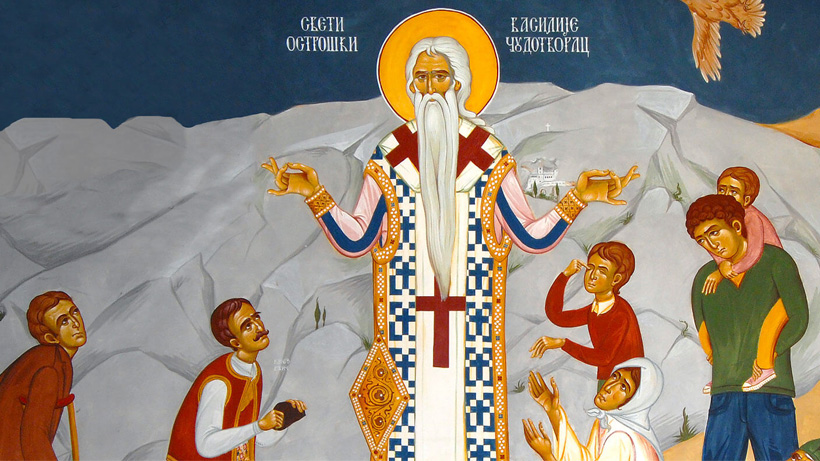The Life of St. Vasiliye (Basil) of Ostrog the Wonderworker
St. Basil (Vasilije) was born in the village of Mrkonjich near Popovo Polje in Trebinje ( Republic of Srpska) on December 28, 1610 to a devout and honest Orthodox Christian couple Petar and Anastasia Yovanoch. At holy baptism his parents named him Stojan and later taught him piety and God’s wisdom. From his earliest childhood Stojan proved to be very bright and able-minded while being wholly turned towards God in his soul. He received his first lessons in virtue and piety in his home. His parents always thought more about God and their own souls than about the transient things of this world.
His other lessons in piety consisted of fasting, prayer and regular attendance at all church services. As soon as he crossed the threshold of the holy temple, Stojan would make prostrations and kiss the church floor and then proceed to venerate the Holy Cross and the icons. At the Holy Liturgy he stood in faith, love and fear of God as though he was standing before the very throne of God. Humility and seriousness were his principal virtues as well as compassion of both heart and soul. His family was poor with hardly enough bread for everyone. Yet he never ate what little bread there was by himself, but rather shared it with others especially while tending to his sheep with the other shepherds.
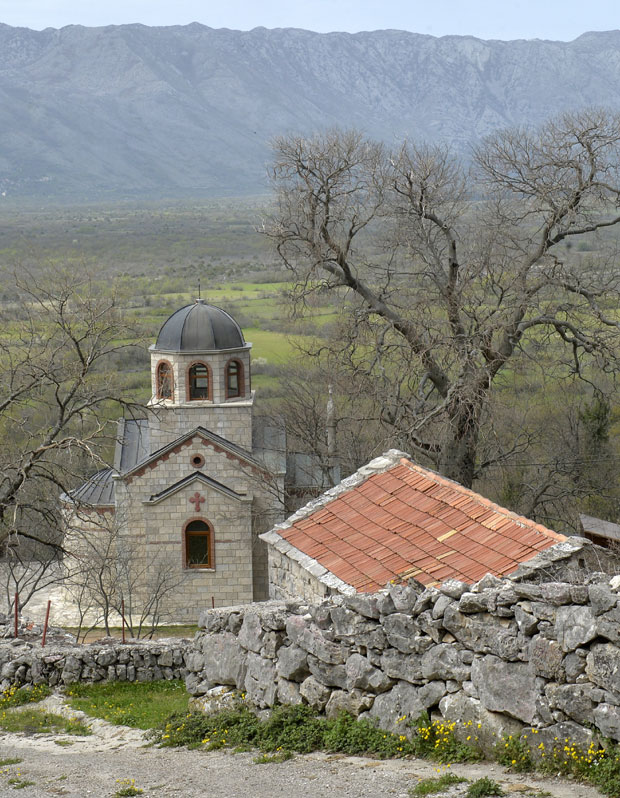
Mrkonjici, Trebinja St. Vasilije’s Home
The Zavala Monastery’s Pupil and Tvrdosh Monastery’s Novice and Hieromonk
In Stojan’s native village of Mrknjici there were some evil-minded people; converts to Turkish/Muslim faith. They hated Stojan’s parents and soon turned against Stojan too because of his piety and wisdom. These were Stojan’s first trials of many more to come. In order to protect him from his enemies and also to have him get an education, his parents took him to Zavala Monastery, the nearest monastery in the area. Zavala monastery was and still is dedicated to the Entrance of the Most Holy Theotokos. The abbot of the monastery was Serafim, Stojan’s paternal uncle. The monastery was well known in Herzegovina and had a large monastic brotherhood. It also had a significant number of books. It was here that young Stojan first learned the wisdom of the Holy Scripture and the works of the Holy Fathers. He also learned many other worldly skills. While reading the holy books and the words of the Fathers his soul began to burn even more intensely with love for God and asceticism. It was then that a desire for the monastic life was born in him.
The blessed Stojan remained in Zavala monastery for some time and then moved to Tvrdosh monastery. This monastery was dedicated to the Dormition of the most Holy Theotokos and was also the seat of the Trebinje’s Diocese. While at Tvrdosh, the venerable Stojan grew to love the monastic life even more. Increasing his ascetic feats he finally decided in his heart that this was the place where he would receive his monastic tonsure. He spent his time in vigil, prayer and fasting, as well as performing physical tasks/obedience. When he finally took his vows, he received the monastic name of Vasilije, after Basil The Great, mimicking him both his ascetic life as well as in his service as bishop later on. After some time St. Vasilije was deemed worthy to receive the rank of deacon, and later that of hieromonk. He served before the sacrificial altar of God with complete devotion and chastity. After serving for several years at Tvrdos monastery he traveled to Montenegro to see Mardarije the metropolitan of Cetinje who decided to keep him in Cetinje for a while. Soon, however, certain disagreements appeared between the two of them.
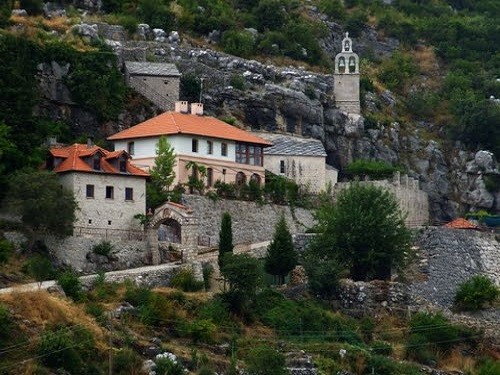
Zavala Monastery
The Struggle For the Orthodox Faith
At that time the western parts of the Orthodox countries were subject to ever-increasing Roman Catholic propaganda. Jesuit proselytes were sent by the pope of Rome with the express orders to gradually convert Orthodox population to Roman Catholicism and to lead them into complete submission to the authority of the pope. While at the same time taking advantage of the extremely difficult condition of the Serb’s slavery under the Turkish/Ottoman rule to the realization to their goal. The gradual conversion to Roman Catholicism was know as Unia. It’s first step was to convince the Orthodox to accept the pope’s extreme authority, while adhering to their own rite. The main focus of the Latin missionaries were the regions of Littoral Montenegro and Herzegovina. The venerable Vasilije, a valiant protector of Orthodoxy, attempted to warn metropolitan Mardarije of the canning work of the Latin proselytes. But the weak-willed metropolitan was very indulgent towards the Roman Catholics.
The Orthodox people, however, refused to bow down to Latin propaganda thanks to their strong faith and the zealous work of St. Vasilije against the “Unia”. St. Vasilije advised the metropolitan to oppose the enemy of Orthodoxy as a true soldier of the church, firmly and fearlessly defending the faith and the truth of Christ. However, the metropolitan not only ignored St. Vasilije’s advise but also began spreading rumors and false accusations about him. The Serbian people refused to believe these lies as St. Vasilije was well-known and loved for his holy and God-pleasing life.
In order to distance himself from the evil and intrigue that surrounded him in Cetinje, St. Vasilije returned to Tvrdos monastery were he continued his struggle for the purity of the Orthodox faith and to protect his flock from the foreign influences. It was for this reason that he became known as the noble “Zealot of Orthodoxy”. At Tvrdos the Saint carried on with his ascetic life, not only for the benefit of his soul but also for the salvation of all Serbian Orthodox people. From his prayer-imbued monastic cell he witnessed all the suffering of his people who struggled under the Turkish yoke, living in poverty and endless fear of raids, violence and devastation, and under constant threat of Uniate propaganda. And so he ceaselessly offered up prayers for the well-being of his Serbian Orthodox people. Although by then he has already been promoted to the rank of archimandrite, he did not limit his work to the monastery but went among his flock visiting the villages of Herzegovina and the homes of the people while preaching to them the Gospel of Christ. Traveling among his people just like his predecessor the Holy Hierarch Sava (Sabbas) the Serbian, he diligently performed all church services. Offering up the Holy Mysteries (Sacraments) and thus encouraging the people in their faith and at the same time helping the needy and the suffering. The “intercessor of the rabble”, as he was known among the Turks, he served his people as a true shepherd and evangelical enlightener. His apostolic work provoked wrath among the local converts to Islam who plotted to kill him. In order to protect himself from danger and also to seek help for his people, the Saint went on a journey to the Orthodox Christian land of Russia. Upon his return he brought many valuable gifts from the Russian Church, vestments and holy books, as well as money for his needy flock. It was with these gifts that he helped impoverished churches throughout Herzegovina, as well as needy individuals and the sick and suffering. He also began the reconstruction and repair of many abandoned and ruined churches and organized school for the people in Tvrdos and all over perishes. In this ministry of enlightening his flock which was comparable to the work of the holy members of the Nemanjich dynasty, he asked for and received the help from the Tvrdos brotherhood and the local parish priests in his ministry.
However, the cunning and evil enemy of mankind did not leave him alone and his enemies’ hatred towards him grew. His enemies were, on one hand, the converts to Islam, and on the other hand, the agent of Unia. His fearless and unceasing struggle and apostolic ministry only increased the hatred and violence of the enemies of God so that the Saint was once more forces to leave. This time he decided to travel to the Mount Athos, that beacon of Orthodox faith and virtue. He began his journey in Tvrdos, traveling through Niksic, Zupa monastery and the Moraca monastery. Then crossing Vasojevic and Budimlje, he reached the monastery of Djurdjevi Stupovi. From there he traveled straight to Pec (Kosovo) where he met with the most holy patriarch of Pech, Paisiye Yanyevac and told him in detail the sad state of affairs in his native Herzegovina and how the people suffered under the Turkish rule as well as of the many dangers that the Unia presented. Then he informed the patriarch about his wish to travel to Mount Athos and asked for his blessing to make the journey. The wise Serbian patriarch Paisiye immediately recognized the great spiritual capacity and virtue of archimandrite Vasilije and , taking into account his previous work as shepherd of his people, decided to make him the hierarch of the church. However, he first blessed him to travel to Mount Athos, advising him not to stay there too long, but to come back to Pech. The Patriarch understood that only a man with the abilities of Vasilije could help the suffering Serbian Orthodox people of Zahumlje (Herzegovina).
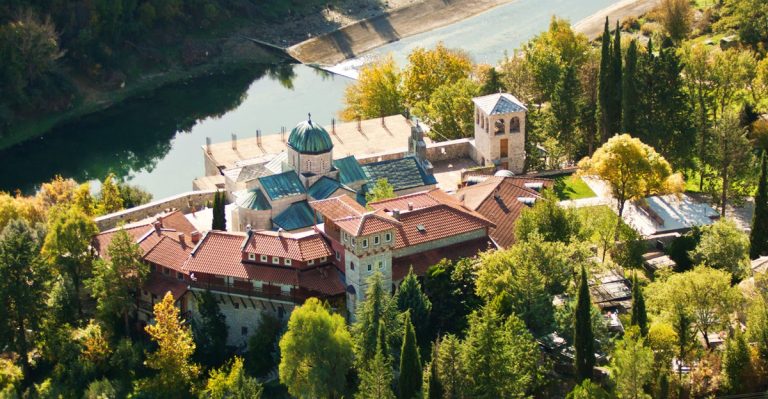
Tvrdos Monastery
St. Vasiliye’s Stay on Mount Athos and Russia and His Ministry as Bishop
After a peaceful journey the Saint arrived to Mount Athos and stayed there for about a year. He visited many monasteries and sketes and heard many wise words from the Anthonite monks and recluses. He spent most of his time among his Serbian brethren in the Serbian monastery of Chilandar. Upon his return from the Mount Athos he again stopped in Pech and met with the Patriarch Paisiye. The Patriarch then assembled all the hierarchs of the Serbian Church and on the feast day of the Transfiguration of our Lord in the year of 1638, the solemn ceremony of heirotonia (laying of the hands upon the head of the future bishop) took place. Thus, St. Vasilije was appointed Metropolitan of Trebinje and his seat being at the Tvrdosh monastery. Although, at thirty years of age he was still young, he was deemed worthy of an Episcopal rank because of His holy life and because the Church was in dire need of a good leader in those extremely difficult times. From Pec he traveled the same rout to Tvrdos where he was joyously welcomed by his flock. Immediately upon his return he continued his work as a shepherd of the people. In spite of the danger from all sides, he traveled far and wide across his dioceses performing his service to the people as their hierarch. His most important tools in this work were the Word of God and prayer. The power of his prayer was so great that he began performing miracles even at that time. The people already considered him a saint, for they had been assured many times about His holy life and His gift of clairvoyance. Not only did he traveled among his people, but the people began coming to him, seeking help and consolation from him for the many misfortunes that befell them. In his loving compassion the Saint helped everyone with his holy prayers and spiritual counsels and very often, also, with alms. He encouraged all people to give alms to the needy and to participate in rebuilding churches and monasteries.
At his time he received help of the wealthy benefactor Stefan Vladislavic and together with abbot Benjamin of Tvrdos they renovated monastery in which he lived. It was at that time that metropolitan Paisie of Eastern Herzegovina was murdered by the Turks. The center of his diocese was Niksic. The Serbian patriarch at the time was Gavrilo Raic who was later martyred as well. After the passing away of metropolitan Paisie he appointed St. Vasiliye metropolitan of Eastern Herzegovina in a special patriarchal gramata. The Metropolitanate of Eastern Herzegovina, also known as the Metropolitenate of Mileseva was in reality the eastern part of the Old Zahumlye Diocese, since during the restructuring of the Patriarchate of Pech Patriarch Mardarie Sokolovic (1557-1574 divided the Zahumlye Diocese into the Eastern Diocese (with Tvrdos as his center). Thus St. Vasiliye was assigned to the Eastern Diocese, now called the Metropolitanate of Onogost (Niksic), however he did not move to Onogost immediately but administered his new metropolitanate from Tvrdosh monastery. Later he moved to the seat of metropolitanate and continued his hierarchal ministry from there. At this time the Turks intensified their pogroms against the Serbian people, robbing homes in the villages and taking people away into the slavery. The evil soldiers of Ali-Aga were especially violent, pillaging churches and monasteries and leaving behind deserted villages and homes as the people fled. The plight of Serbian people at that time was such that even the suffering of the Israelites in Egypt could not have been worse. The cruel ruler of Herzegovina Senyak-Bey ordered all the national leaders and renowned man among the Serbian people to be caught and put to death. Although he dearly loved St. Luke’s Monastery in Zupa near Nikshch, the Saint was forced to leave his new abode because of the violence on the part of the Turks.
He founded a secluded place, a cave in Pjesivci, at the foot of the Zagaraca mountain, where he decided to make his new dwelling. Some older people advised him to go instead to the Ostrog Monastery and the Saint agreed. He had already heard about the monastery and had even known some of its brethren, especially their virtuous abbot, the venerable elder Isaia (Isaiah). This God-fearing elder lived an austere ascetic life in the cave above the Upper Monastery at Ostrog. After he had fallen asleep, his holy relics were made manifest to be miraculous but the Turks soon found out about them and burned them. Upon arriving at Ostrog, St. Vasilije first stopped at the foot of Ostrog mountain and then climbed all the way up to the Upper Monastery. He made his new dwelling in the cave in which venerable Isaia had lived. From then on he performed his hierarchal duties serving his metropolitanate from that cave for fifteen years. He began to gather around him other monks and ascetics and together with them he rebuilt the small church of the Presentation of The Most Holy Theotokos, originally built by former Ostrog monks. Some time later he built and decorated the tiny church of the Holy and Life-giving Cross in the Ostrog cliff. Frescoes were then painted in this church and they are still there to this day. In a word, he endeavored to turn the Ostrog’s hills and caves into a real monastery which would become a spiritual center for the Orthodox people. As the monastery brotherhood grew, he appointed a monk called Isaia, the grandson of the venerable elder Isaia, as abbot. As for the Saint, he gave himself over to the strictest ascetic life, taking upon himself feat after feat, each one more difficult then the other. Although he was involved in tasks such as building churches and monasteries, and although he performed a heavy physical labor, hauling stones and building materials with his own hands while at the same time taking care of metropolitanate and the flock entrusted to him, he still did not decrease the time he spent in prayer and fasting. His thoughts were constantly turned to God. He ate only fruits and vegetables and regularly performed prostrations and other spiritual exercises pertaining to the monastic life. His body was thin and his face was the color of pure wax. He was truly a temple of the Holy Spirit.
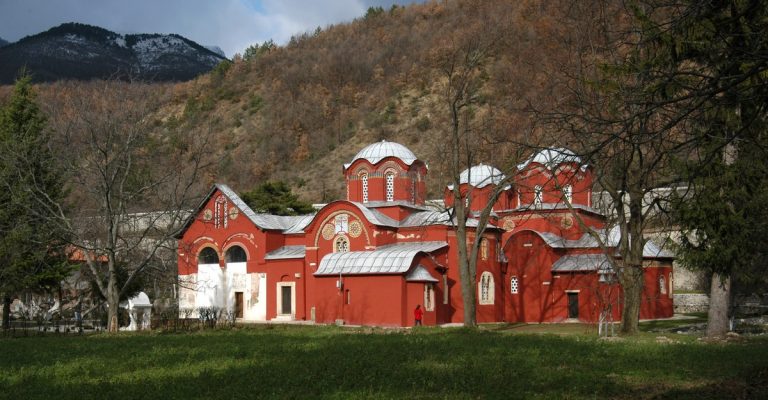
Patriarchate of Pec (Kosovo)
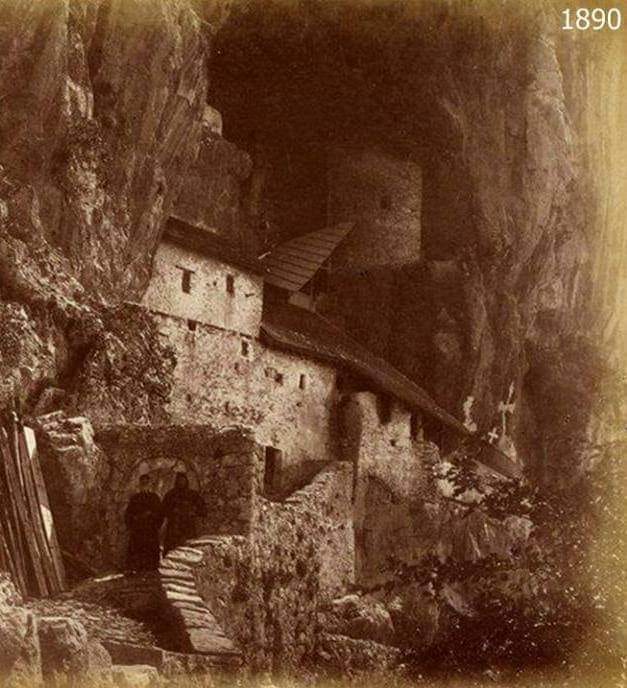
Monastery Ostrog in 1890
The Hierarchal Cross
Saint Vaisliye did not spend all his time in his cave dwelling, From his spiritual heights at the Ostrog he often descended into the plains and villages to be among his people. Man and woman began flocking to him from all directions, in great masses, seeking his help and spiritual counsel. Even during his life the people considered him a saint. Many of them felt the healing power of his prayers and glorified God for it. The persecuted and much suffering people of Herzegovina sought refuge from Turkish violence at Ostrog with the Saint and many of them spent time together with their Vladika (bishop). Their blessed spiritual father and intercessor before God cared for them and fed them thanks to the help from the surrounding villages. From his cave dwelling in the Ostrog cliffs he corresponded with the Patriarch in Pech regularly, visiting him whenever possible. He confided in the Patriarch about the evil-mindedness of some of the people in his vicinity. Near the monastery lived a certain duke by then name of Raich who along with his six sons robbed and pillaged the monastery and performed other misdeeds as well. Because of the duke’s violence and the injustice he suffered at the hands of certain other people, the Saint wished to move from Osrog to some other place where he could continue his life as a hermit in peace. He thought about permanently moving to the Mount Athos.
However, he knew in his heart that these misdeeds were the work of evil demons who were set on destroying his virtuous life. Also, the people from the nearby village of Bjelopavlici, lead by their parish priest Mihailo Boshkovich, bagged him not to abandon them and leave them without his spiritual protection and prayerful guidance. And so the Saint decided to stay in Ostrog and suffer injustice until the end. However, he still went to meet with the Patriarch Maxim in Pech to inform him of the current situation at the monastery and among the people. The patriarch wrote a letter to Duke Raich and to the people of Bjelopavlici, instructing them to protect the holy monastery of Ostrog and warning them that the serious curse would fall upon anyone who would dare to any kind of evil to the Saint or the monastery. The Saint foretold that a terrible fate would befall Duke Raich because of the criminal deeds he had committed against the monastery- that all his sons would die. This prophecy of the Saint soon came true. A bereaved Duke Raich went to the Saint and told him about the tragic death of his sons. The Saint consoled the duke and advised him to repent for his sins and the sins of his sons. He said that if his repentance was sincere, the Lord would bless him with numerous offspring. Once more, the Saint’s prophecy came true and the duke had several male children after that. Many other prophecies made by the Saint came true and many miracles happened by the power of his prayers.
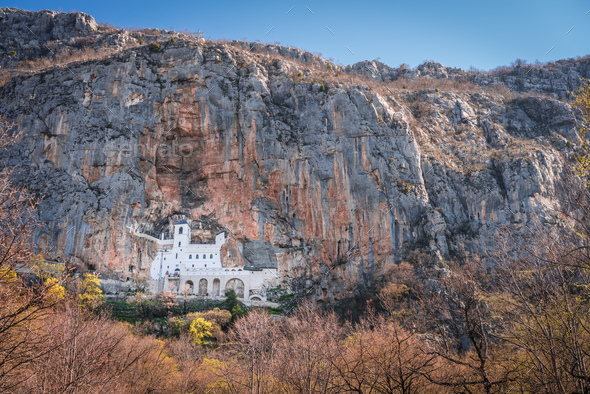
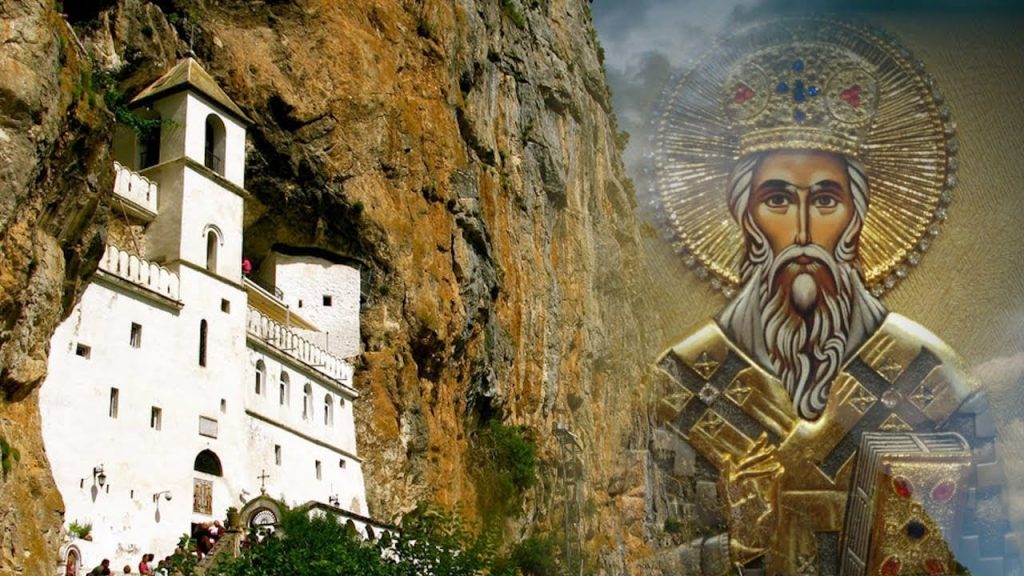
Ostrog Monastery Today
The Falling Asleep of Saint Vasiliye of Ostrog and His Holy Relics
Tireless in prayer, fasting and physiscal work and burdened by many spiritual and eartly cares for his flock, the Saint of Ostrog slowly came to the end of his earthly life. He reposed peacefully, without pain or suffering, easily giving up his soul to his Lord on April 29, 1671 in his cell above the monastery. Later, a wine grew out of the rock besides which he had reposed. Although in the rock there was no soil whatsoever. at the moment he gave up his soul, his cell shone with an unearthly light. The monks buried St. Vasilije’s body in a grave under the church of the Presentation of the Most Holy Mother of God.
Immediately after his repose the people began visiting his grave in great numbers and praying to him , just as they had gone to him during his earthly life. Many miracles took place at his graveside which have not ceased to this day. Seven years after his repose , in 1678, the Saint appeared in a dream to abbot Rafailo of Kosierevo of the Zupa monastery near Niksic. He bade him to go to Ostrog and to open his grave. The abbot paid no attention to the dream and did not go to Ostrog. The Saint then appeared to him the second time and he again ignored the dream. Then the Saint came to him in a dream for the third time, fully vested in his hierarchal robes and with a censer in his hand. While he was censing, a peace of red hot coal fell from the censer and burned abbot’s face and hands. Upon waking, with fear and trembling, the abbot told his brethren about the dream. They immediately began preparation to travel to Ostrog.
Upon arriving they told everything to the monks of Ostrog. They all fasted strictly for seven days, all while observing the complete cycle of services and serving daily Liturgies. On the seventh day they censed the Saint’s grave and opened it. The Saint appeared before them in his glorified body which was yellow as wax and emitted a beautiful fragrance similar to that of basil leaves. The monks places his holy relics in a case and took it to the Church of the Presentation of the Most Holy Virgin where they lie to this day. The news about the glorification of St. Vasiliye’s relics quickly spread far and wide and people flocked in great numbers to venerate them. Since then to this day, by the grace of God and the holiness of Saint Vasilije many wonderful miracles have taken place at the site of his relics. Not only pilgrims of the Orthodox faith, but also those of other Christian denominations and even Muslims came to pray before the Saint’s relics. According to their faith and with the grace of God and His Saint many of them received healing, consolation, and spiritual help.
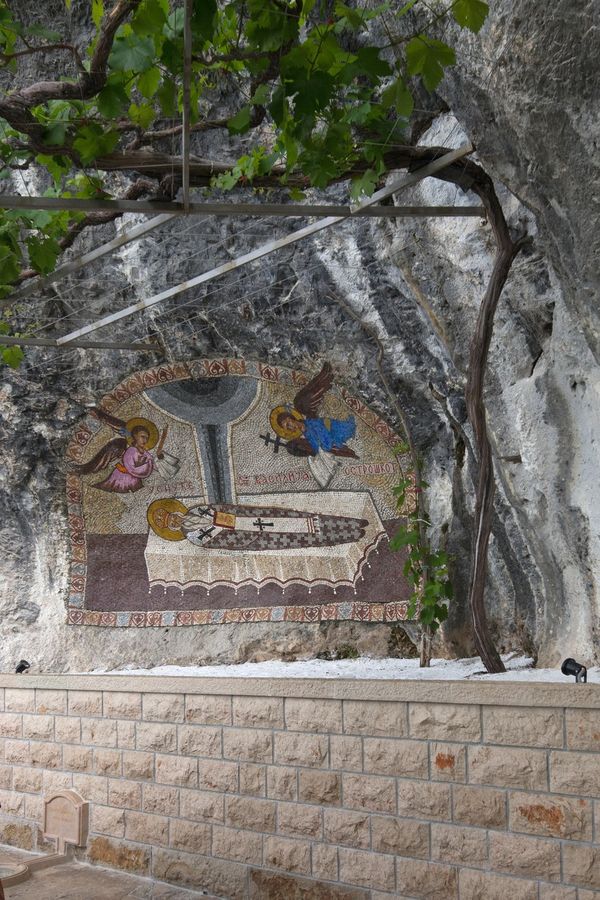
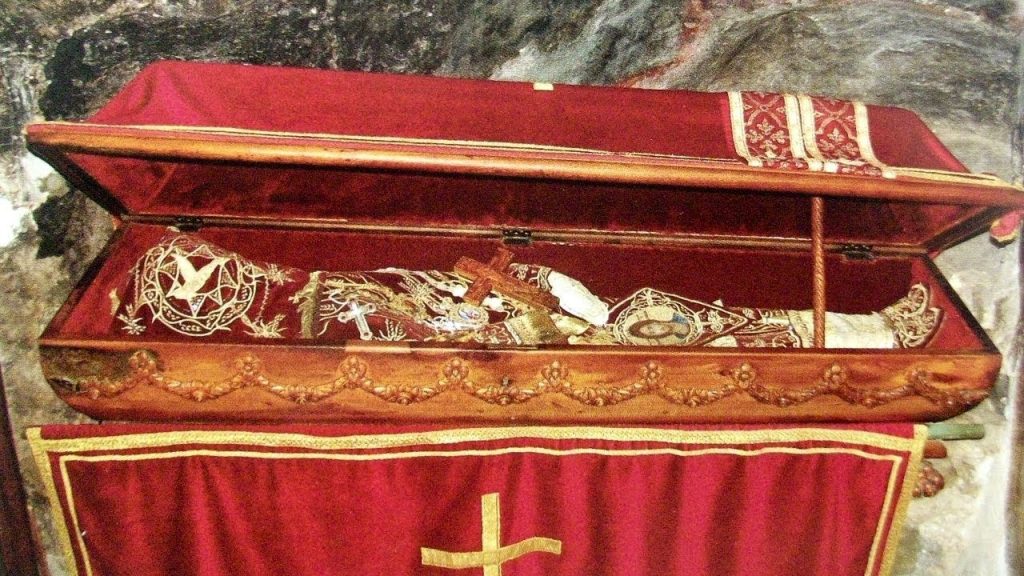
Saint Basil’s of Ostrog relics

